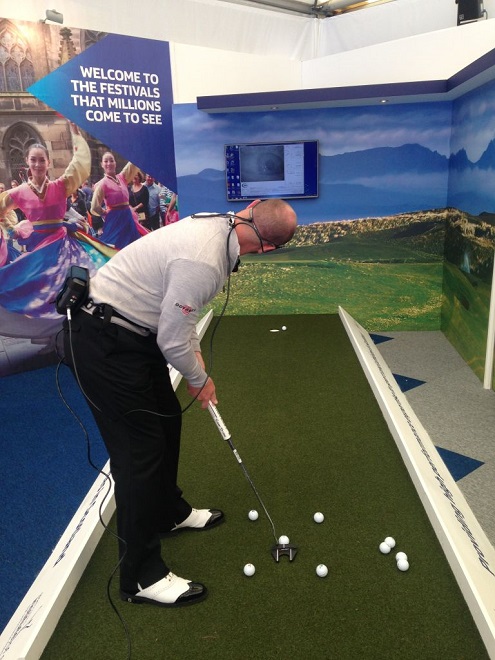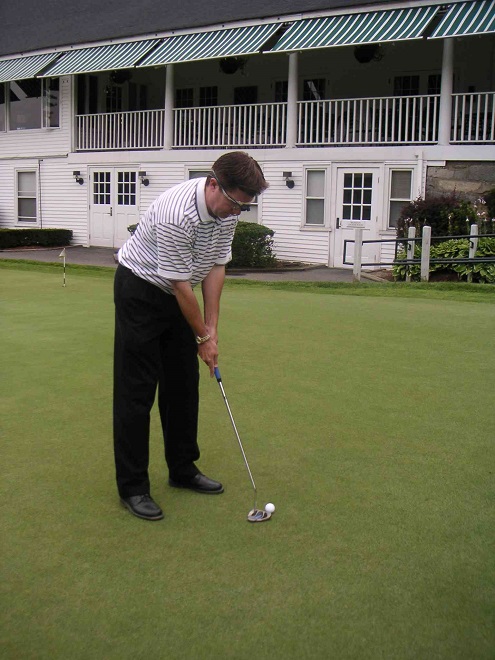Eye tracking at the Ryder Cup 2014
 At the Ryder Cup 2014, sports performance experts from the Sportscotland Institute of Sport (SIS) demonstrate how they assess athletes' golf putting performance with eye tracking glasses, specifically assessing visual skills status and exploring visual skills training. SIS is the high performance arm of sportscotland (The National Agency for Sport in Scotland), which provides high performance expertise to athletes in Scotland, including Scottish Golf athletes across the amateur and professional game. In Scottish Golf, SIS developed practical applications of visual eye tracking in golf putting that have provided a performance benefit to targeted Scottish Golf athletes.
At the Ryder Cup 2014, sports performance experts from the Sportscotland Institute of Sport (SIS) demonstrate how they assess athletes' golf putting performance with eye tracking glasses, specifically assessing visual skills status and exploring visual skills training. SIS is the high performance arm of sportscotland (The National Agency for Sport in Scotland), which provides high performance expertise to athletes in Scotland, including Scottish Golf athletes across the amateur and professional game. In Scottish Golf, SIS developed practical applications of visual eye tracking in golf putting that have provided a performance benefit to targeted Scottish Golf athletes.
According to Dr. Malcolm Fairweather, Head of Science and Innovation at SIS, "Eye tracking technology provides unique insight to measuring and recording visual focus of attention. Athletes and coaches respond quickly to the visual feedback and the numerical information helps to quantify changes over time. Both sources of feedback are evaluated alongside putting performance status."
Eye tracking technology for golf performance
 The New York Times reported that researchers at the University of Exeter in England used eye tracking to understand how training in Quiet Eye, a gaze-focusing technique, helps weekend golfers improve their putting game. "Quiet-Eye training is about looking at the ball for long enough to process information" says Mark Wilson, who led the study, published in Psychophysiology. Quiet Eye training also involves reminding golfers to first briefly look at where they want the ball to go.
The New York Times reported that researchers at the University of Exeter in England used eye tracking to understand how training in Quiet Eye, a gaze-focusing technique, helps weekend golfers improve their putting game. "Quiet-Eye training is about looking at the ball for long enough to process information" says Mark Wilson, who led the study, published in Psychophysiology. Quiet Eye training also involves reminding golfers to first briefly look at where they want the ball to go.
Eye tracking is used as an effective training tool
Gareth Paterson of Stellenbosch University in South Africa knows that top-flight athletes who play aiming sports like golf and soccer may be overlooking a powerful training tool — eye tracking. “When the golfers see the playback of the videos from eye tracking glasses, they are often quite shocked. They come into the testing thinking they know all about where they are looking, yet they have little awareness of how their eyes look around.”